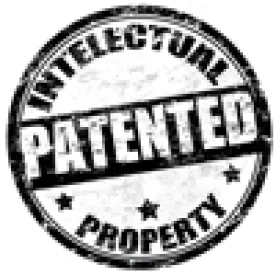Takeaway: A reference is publicly accessible upon a satisfactory showing that the reference has been disseminated or otherwise made available to the extent that persons interested and ordinarily skilled in the subject matter or art exercising reasonable diligence can locate it.
In its Decision, the Board denied the Petition as to all challenged claims. Thus, no trial was instituted.
The Petitioner had requested inter partes review of claims 26-29, 31, 36-41, 43, and 47-52 of the ’228 patent. Claim 26, the only challenged independent claim, is directed to “[a] master communication device configured to communicate according to a master/slave relationship in which a slave communication from a slave device to the master communication device occurs in response to a master communication from the master communication device to the slave device.”
All five of the asserted grounds of unpatentability were based at least in part on an IEEE Draft Standard. The dispositive issue of the proceeding was whether the Draft Standard was an actual printed publication.
The Board noted that the Draft Standard was “an unapproved draft of a standard proposed by the Institute of Electrical and Electronics Engineers (‘IEEE’).” According to the Board, neither the Petition itself nor the O’Hara Declaration relied upon by Petitioner contained assertions or evidence sufficient to show the availability of Draft Standard to the public interested in the art. The Board found that the submitted evidence did not sufficiently show that the Working Group’s server was an open server; instead, the evidence suggested that the documents on the server were password protected. As stated by the Board, “based on the evidence Petitioner provided, we conclude Petitioner has not made a sufficient showing that Draft Standard was a printed publication as of July 1996 or earlier, as alleged, i.e., that Draft Standard was available as of July 1996 or earlier to an ordinarily skilled individual, exercising reasonable diligence, who might have been interested in the subject matter of Draft Standard.”
Samsung Electronics Co. Ltd., Samsung Electronics America, Inc., Samsung Telecommunications America, LLC, and Samsung Austin Semiconductor, LLC v. Rembrandt Wireless Technologies, LP, IPR2014-00891
Paper 8: Decision Denying Institution of Inter Partes Review
Dated: December 10, 2014
Patent 8,457,228 B2
Before: Jameson Lee, Howard B. Blankenship, and Justin Busch
Written by: Busch
Related Proceedings: Rembrandt Wireless Technologies, LP v. Samsung Electronics Co., No. 2:13-cv-00213 (E.D. Tex. 2013);Samsung Electronics Co. v. Rembrandt Wireless Technologies, LP, Case IPR2014-00889 (filed June 4, 2014); Samsung Electronics Co. v. Rembrandt Wireless Technologies, LP, Case IPR2014-00890 (filed June 4, 2014); Samsung Electronics Co. v. Rembrandt Wireless Technologies, LP, Case IPR2014-00892 (filed June 4, 2014); Samsung Electronics Co. v. Rembrandt Wireless Technologies, LP, Case IPR2014-00893 (filed June 4, 2014); and Samsung Electronics Co. v. Rembrandt Wireless Technologies, LP, Case IPR2014-00895 (filed June 4, 2014)



 />i
/>i

